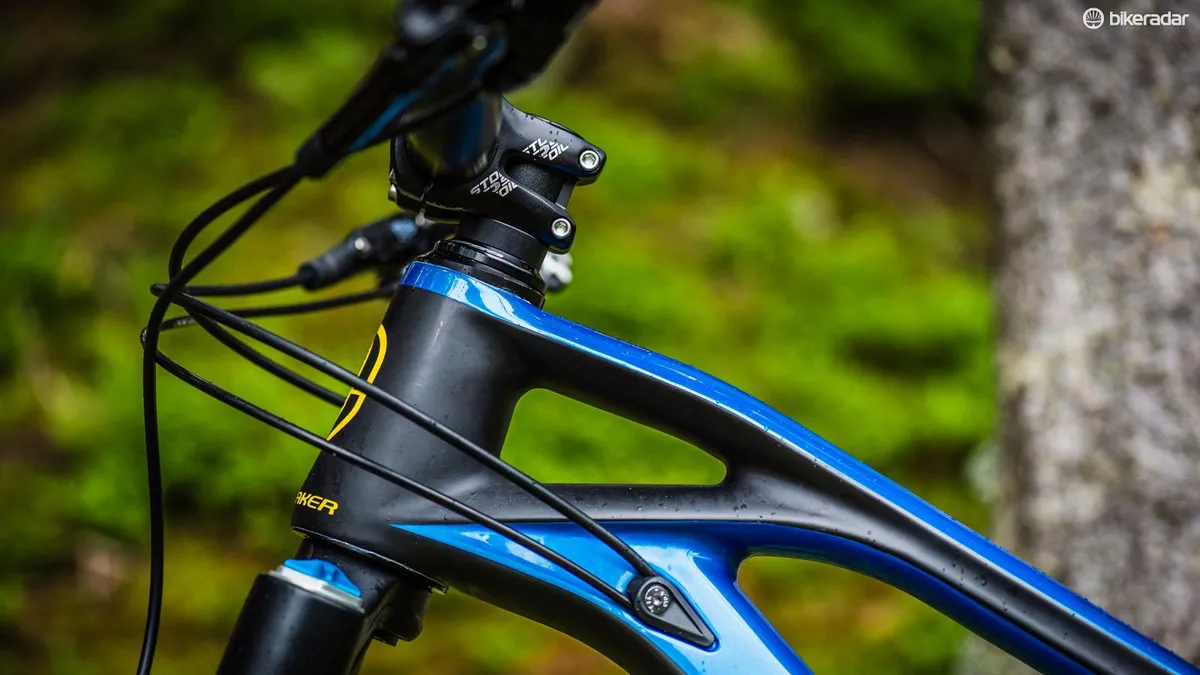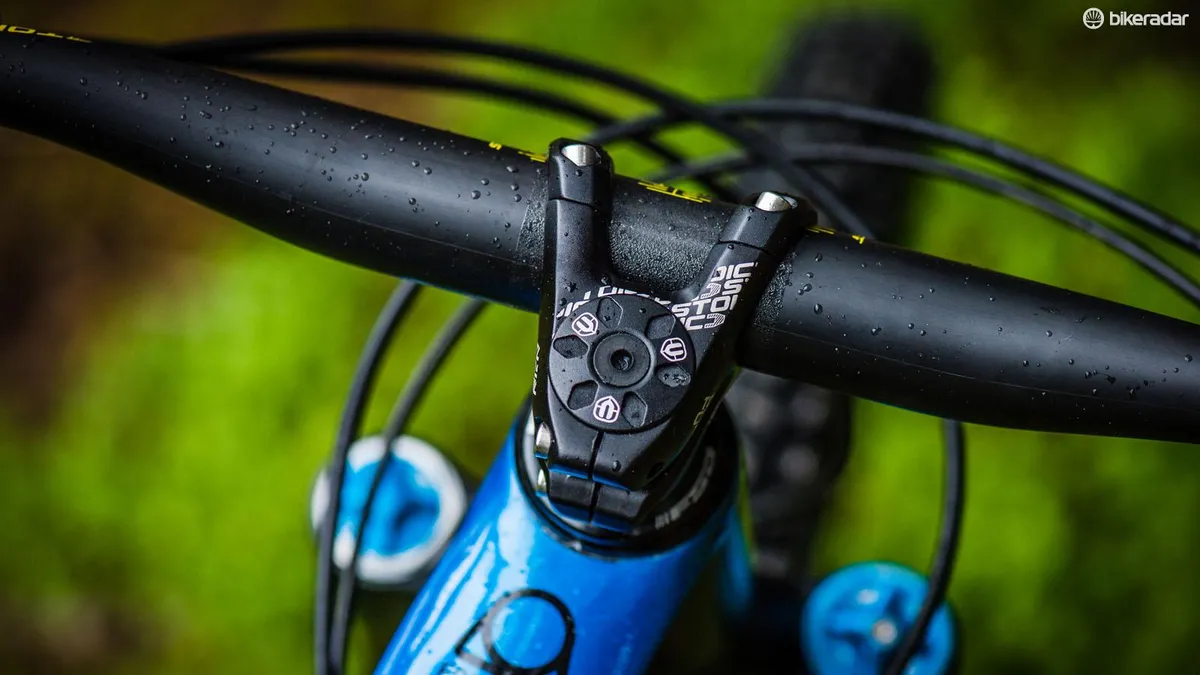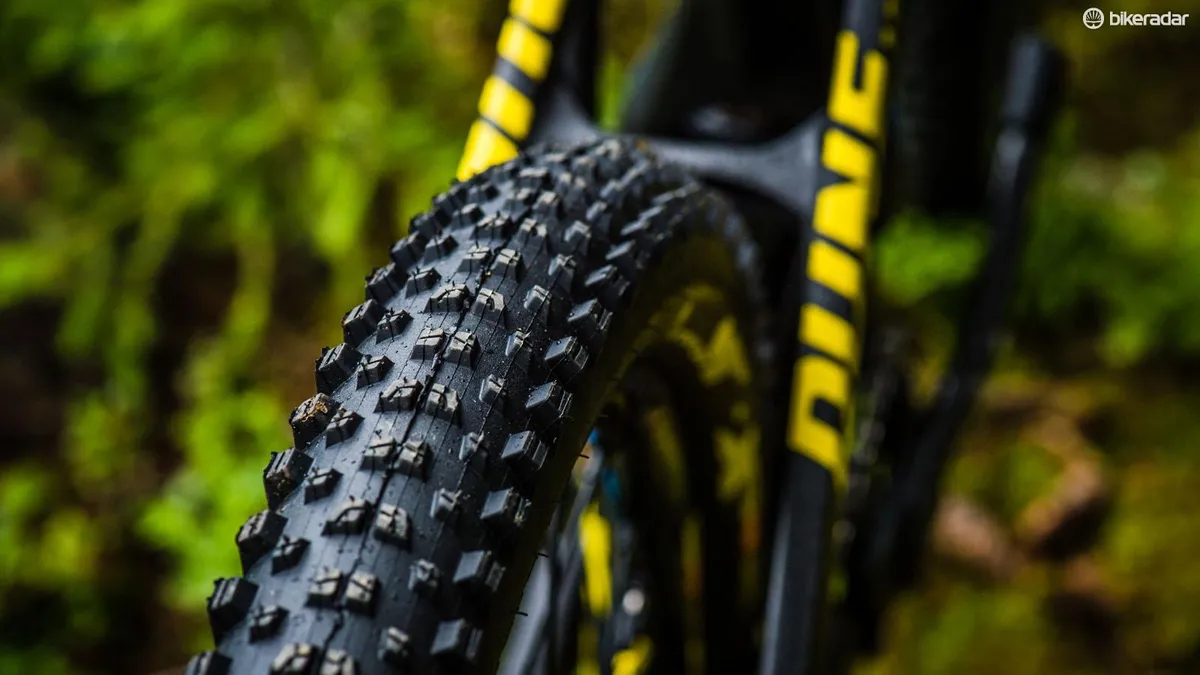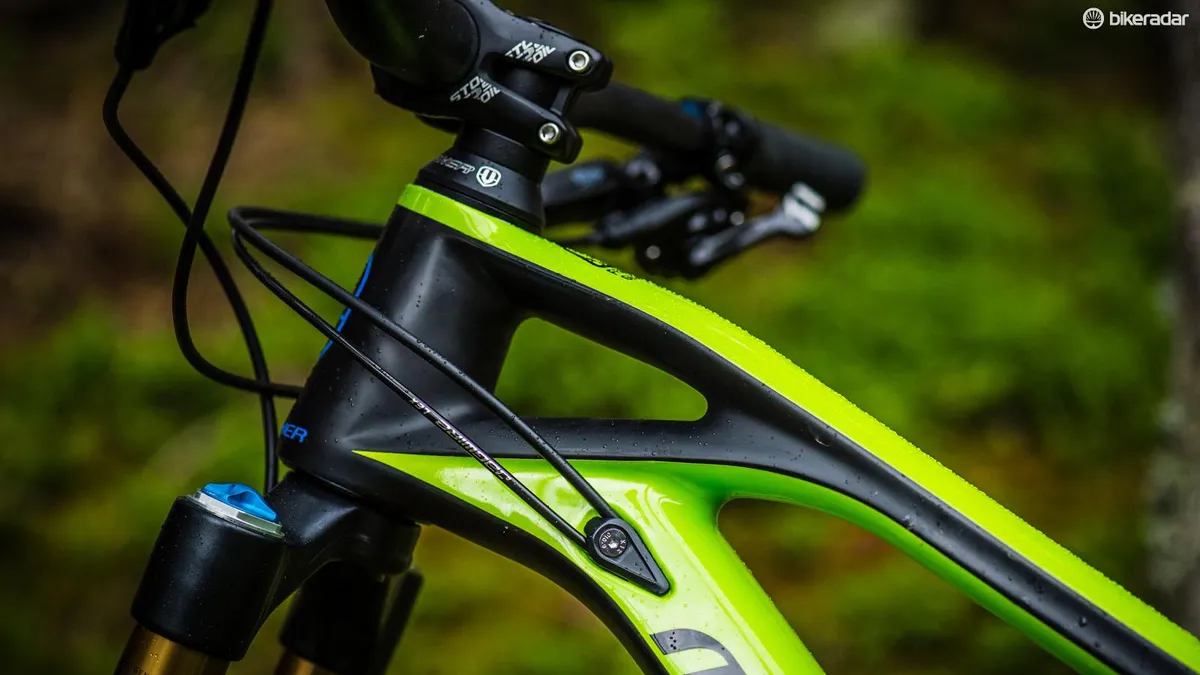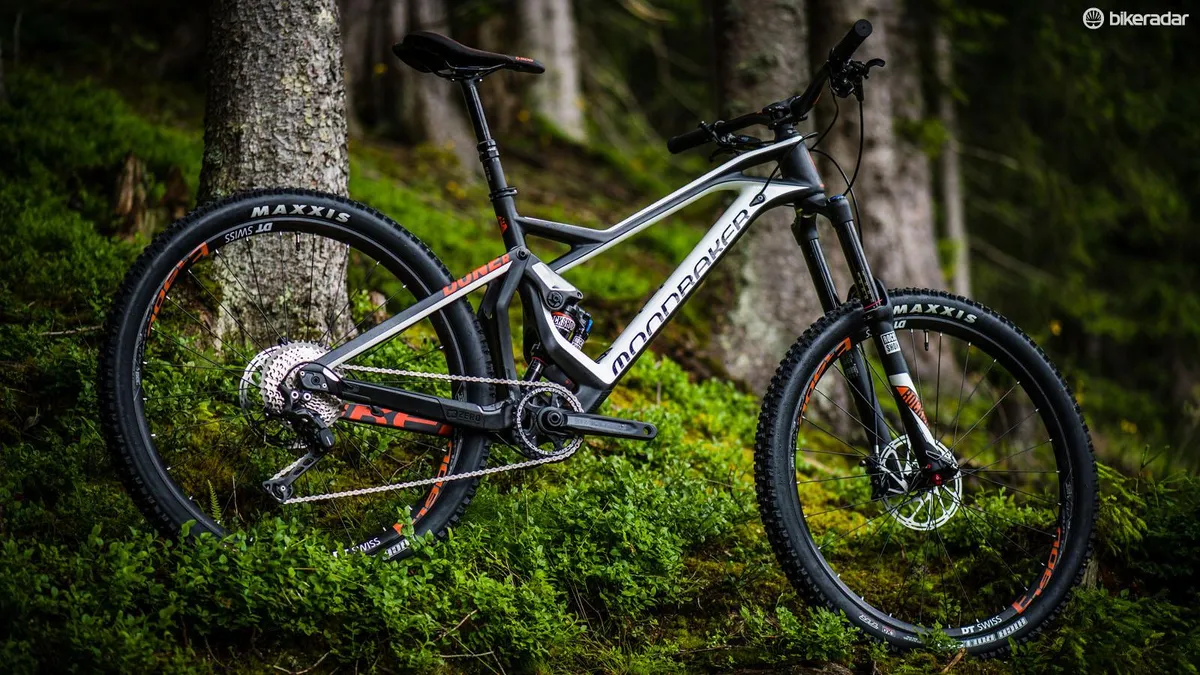After entering the world of composite frames with the Foxy trail bike and then the Summum downhiller, Mondraker has completed the trilogy with an all-new composite framed version of its 160mm travel Dune enduro bike.
Using the lessons learned from having top class riders such as Danny Hart session its carbon frames at the highest levels of downhill racing, Mondraker’s engineers have shaved more than half a kilo from the alloy Dune frame’s weight. High-tech mouldings and new tube profiles have been used to radically lighten the Spanish firm’s already boundary-pushing, extra-long Forward Geometry design.
Tweakable and tougher
As well as translating the basic frame design, Mondraker has taken the opportunity to add adjustability and boost durability.
Adjustable chainstay length and headset cup inserts allow you to tweak the bike to your desires; larger diameter bearings with collet axles also feature. By using a reversible chip to locate the 142x12mm (no Boost 148 here, kids) rear axle, it’s possible to move from a 430mm to 440mm chainstay.

Flippable inserts allow chainstay length to be adjusted from 430 to 440mm
Mondraker has also eliminated the annoying axle nut seen on the Foxy, which has a habit of falling out while the wheel is removed. Up front, angled headset cup inserts allow the head angle to be Choppered out to 65 degrees from the standard 66, or alternatively steepened to 67 degrees if you’re not a fan of slacker-handling bikes.
Alignment guides on the head tube, to ease pressing in new cups accurately, are a neat touch. Foxy Carbon owners will be pleased to know that these cups will also fit their frames.
Rear swingarm bearings on the multi-link Zero system have been beefed up to larger diameter items using collet axle fixtures, similar to those used on the Summum. The setup kicks out 160mm of travel, paired with a 170mm fork on the top-end XR bike, while the RR and R models use a 160mm fork.
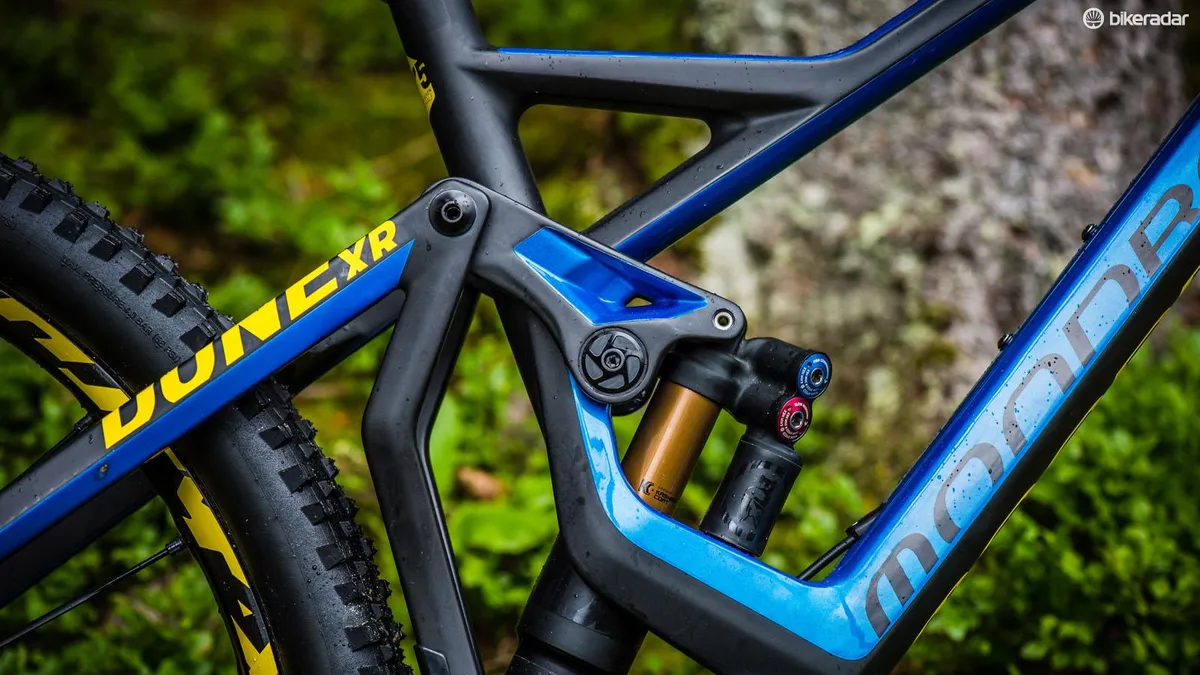
Larger diameter bearings and new fixtures promise greater durability
Tweaks to the shock cradle design, lovingly called the “lady’s legs” by the design engineers, mean a shock with a piggyback can be fitted, unlike on the Foxy Carbon. Indeed, the top end XR model comes with the all new Fox Float X2 twin tube damper, sporting both high and low speed adjustable compression and rebound damping.
Mondraker has plumped for a threaded bottom bracket shell using alloy inserts co-moulded to the frame, as opposed to the press-fit design of the Foxy. We’ve had issues with press-fit BBs on a number of bikes from different manufacturers, so this is no bad thing.
The frame is now single ring-specific, with no provision for a front derailleur to be fitted.
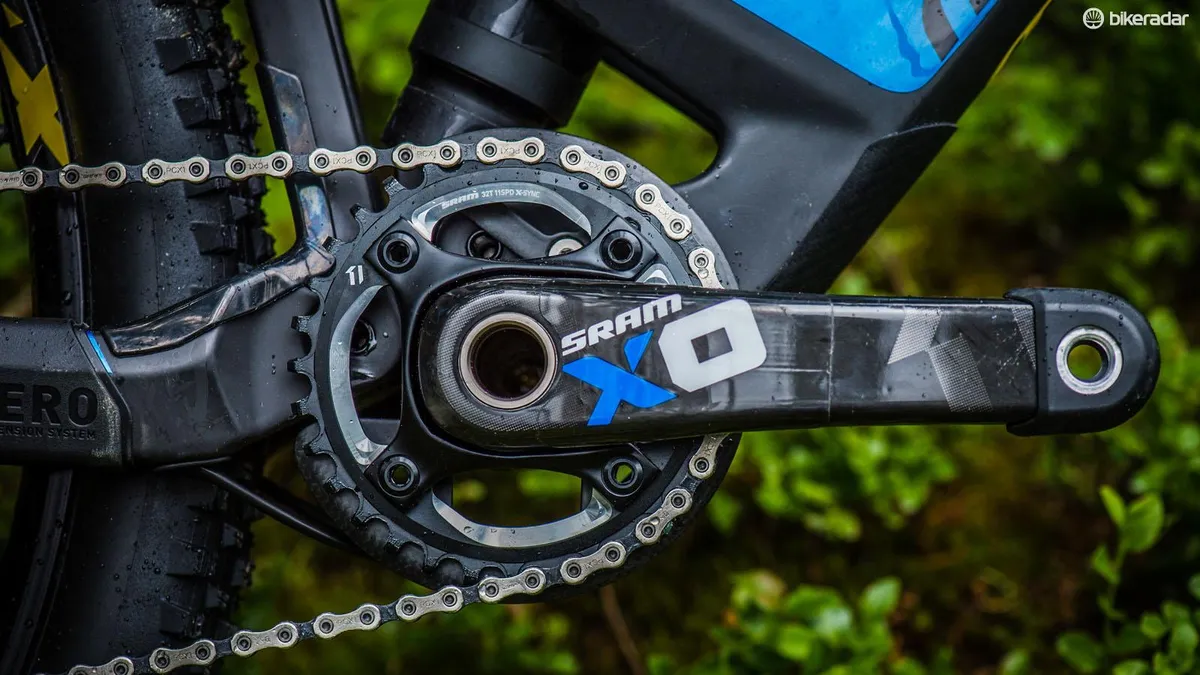
All models are 1x drivetrain specific
There will be three bikes in the Dune range, with the top level XR model using a Fox Float 36 RC2 fork up front paired to the new Float X2 at the back. Drivetrain comes courtesy of a mix of SRAM X01 and X1, and this is certainly the model to opt for if you’re a dedicated suspension tweaker with cash to spare – at €8,999 / £6,599(US/AU pricing was not immediately available), deep pockets are a must. The Mavic Crossmax XL wheels do sweeten the deal somewhat though.
If you’re willing to forgo a touch of adjustability, the RR model comes with a Fox Float 36 FIT4 fork and Float X shock along with a SRAM X1 drivetrain for €7,499 / £5,599 (US/AU pricing was not immediately available). Weighing just 12.74kg, it drops nearly half a kilo over the higher priced XR.

The second from top RR bike comes in at €5,599 / £4,699 and 12.74kg
To our eyes, the more budget conscious will be best served with the base R model, which drops a touch of travel at the front with a 160mm RockShox Pike fork paired to a Monarch Plus rear shock. There’s only a 50g weight penalty over the top XR model too at 13.25kg for the complete bike. It also comes with a single ring version of the new Shimano XT 11-speed drivetrain, which has a slightly smaller gear range. At €5,999 / £4,599 (US/AU pricing was not immediately available) your legs might not thank you, but your wallet certainly will.
Both the R and RR models will be available from the end of July, but you’ll have to wait until September to get your paws on the XR model thanks to supply issues with the fancy rear shock.
First ride impressions
I had a chance to ride the top XR model fitted with a Float X2 shock. To anyone familiar with the Forward Geometry concept, the long top tube and short stem combo feels instantly comfortable and composed. Interestingly, the 10mm stem is now nowhere to be seen, with all models coming with a 30mm item, with an oversize 35mm bar clamp on the top two bikes.
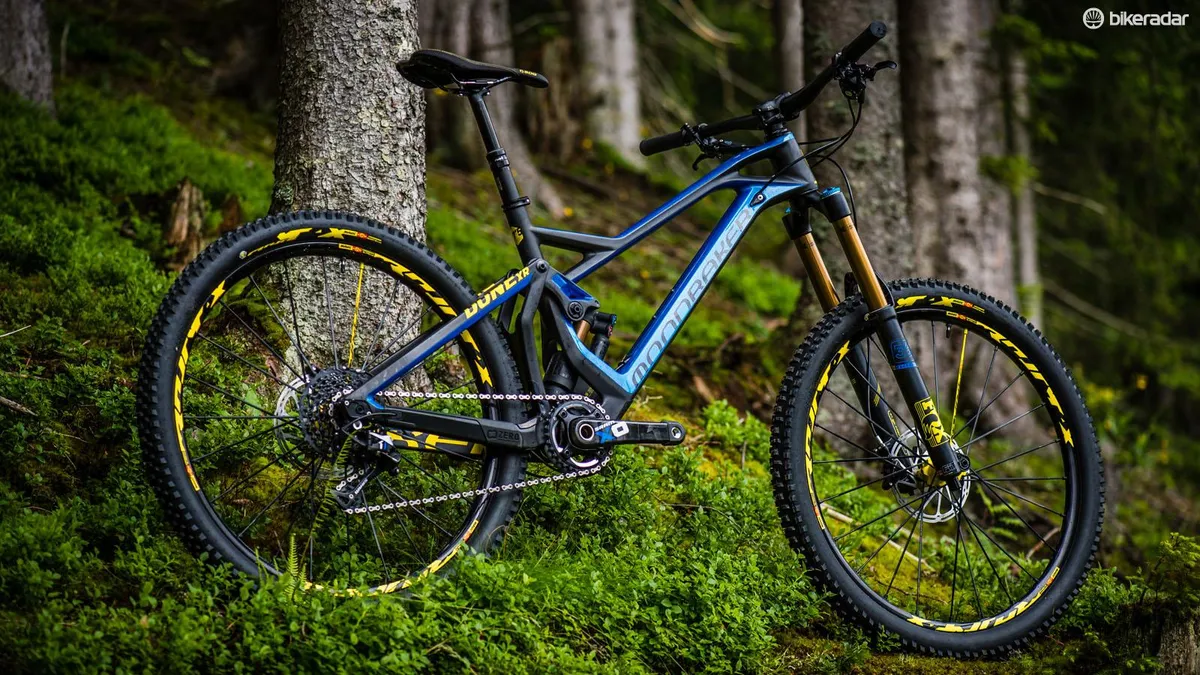
The top-line XR model comes with a 170mm Fox Float 36 RC2 fork and Float X2 shock
A decently wide bar rounds out the aggressive feeling cockpit, while the love/hate Formula brakes and their levers were binned in favour of four-pot SRAM Guide units. It certainly makes setting the levers nice and close to the bar much easier, with far more predictable control.
Our test centre was to be Austria’s Leogang Bike Park, fresh from Aaron Gwin’s stunning chainless victory the day before. Sadly the heavens had opened, so it was slick underfoot, something the lightly treaded Mavic rear treads made me aware of quite quickly.
While the World Cup meant that trying to go toe to toe with the downhill set on the rough and tumble trails was still out of bounds, the wider hucks’n’jumps sections of the only open trail meant that the bike’s intrinsically stable and neutral character shone through. It was only the more natural feeling high sections where roots, rocks and more sinuous turns gave the Dune a proper run for it’s money.

Iniital impressions? This is a lightweight, progressively shaped enduro race killer
I needed to be fully awake as the greasy trails and enduro racer-friendly rubber combo did their level best to snap and snatch traction away, but the chassis was well composed. If anything, the braking-bump-infested bikepark sections gave a hint of the X2 shock’s class, with the rear end hounding for more speed while the usually sublime RC2 fork started to become the limiting factor.
The neutral but supportive Zero suspension certainly helped too. I’d be tempted to say, though, that I’d rather have the extra give of a set of 31.8mm clamp diameter bars instead of the 35mm models to keep hand-pump trauma at bay.
Though the brief, soggy and rough test runs didn’t allow a full showdown between man and machine, the impression is of a well composed bike with a great chassis and good shape. The only fly in the ointment would be the price, with direct-sales rival Canyon offering bikes with a similar strengths at a lower price.
I’ll reserve judgement until I spend more time on it, but the Dune Carbon is a wickedly fast, well composed enduro contender. Whether that’s enough to win over hearts and wallets, we’ll have to see.
